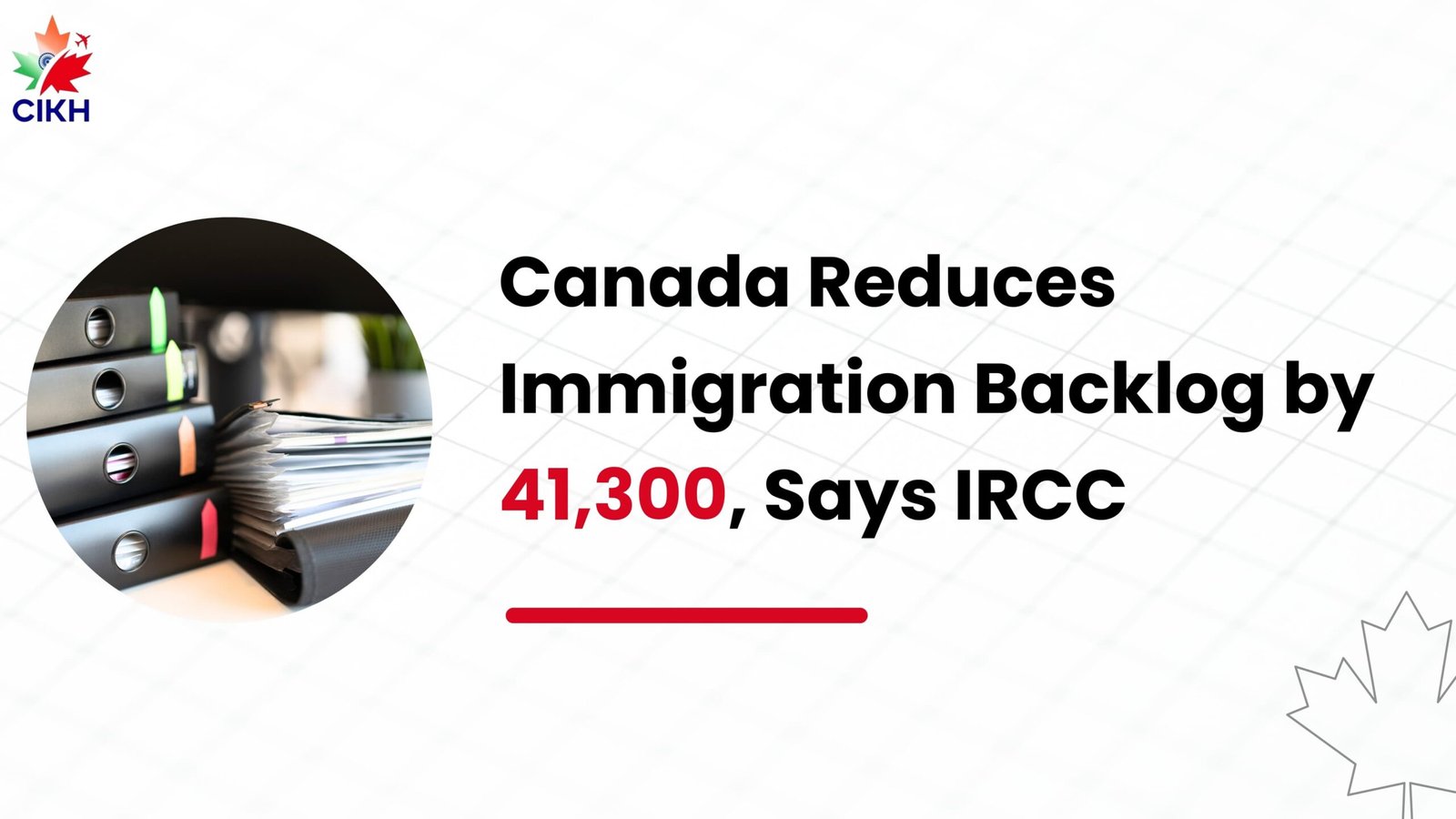On April 29, 2025, Immigration, Refugees, and Citizenship Canada (IRCC) released a new update on its immigration backlog, sparking optimism within the global immigration community.
The update revealed that the backlog of applications had decreased by an impressive 41,300, bringing the total number of pending cases down to 1,976,700 as of March 31, 2025. This marks a significant improvement compared to 2,029,400 applications on February 28, 2025, and 2,076,600 on January 31, 2025.
Book Your Consultation for Canadian Immigration
Whether you’re an aspiring immigrant, a current applicant, a representative, or simply curious about Canada’s immigration process, this article explores the IRCC’s latest update and provides a comparative analysis of the backlog over recent months.
Overall IRCC Processing Numbers
The April 2025 update highlights Canada’s ongoing commitment to tackling its immigration backlog while working toward ambitious immigration goals.
As of March 31, 2025, the IRCC’s total inventory of applications stood at 1,976,700 across citizenship, permanent residency, and temporary residency categories, representing a decrease of 52,700 applications from February 28, 2025.
Even more noteworthy, the backlog, comprising applications that have exceeded their service standards—dropped by 41,300, from 821,200 to 779,900.
Key highlights from the latest processing figures include:
- Permanent Residency: Between January 1 and March 31, 2025, the IRCC processed 119,800 decisions and welcomed 104,300 new permanent residents, supporting Canada’s target of 485,000 new residents in 2025.
- Citizenship: From April 1, 2024, to March 31, 2025, Canada granted citizenship to 356,300 new citizens, reflecting the country’s focus on full integration.
- Temporary Residency: In Q1 2025, the IRCC processed 159,200 study permits and 396,000 work permits (including extensions), contributing to Canada’s workforce and education sectors.
These numbers demonstrate the IRCC’s ability to balance both backlog reduction and high-volume processing, ensuring Canada remains a leading destination for immigrants, students, and workers.
A Breakdown of the Categories
The IRCC’s inventory is divided into three categories: citizenship, permanent residency, and temporary residency. Each category has its unique dynamics, and understanding how each is progressing gives a clearer picture of the overall immigration landscape.
1. Citizenship Applications
- Total Inventory (March 2025): 239,400
- Backlog (March 2025): 43,600 (18% of total)
- Change from February 2025: The total inventory decreased slightly from 239,600 to 239,400, but the backlog rose from 42,700 to 43,600.
Citizenship applications represent permanent residents applying for full Canadian citizenship, a key step in their integration process. While there was a slight increase in the backlog, the overall stability in the inventory and the high number of citizenship approvals suggest that the system remains efficient.
2. Permanent Residency Applications
- Total Inventory (March 2025): 852,700
- Backlog (March 2025): 380,100 (45% of total)
- Change from February 2025: The total inventory rose from 842,600 to 852,700, while the backlog increased from 364,000 to 380,100.
Permanent residency applications, which include programs like Express Entry, Provincial Nominee Programs (PNPs), and family sponsorships, are a central part of Canada’s immigration strategy. The increase in backlog reflects continued high demand, but the IRCC’s processing of 119,800 PR decisions in just three months shows significant progress in handling these applications.
3. Temporary Residency Applications
- Total Inventory (March 2025): 884,600
- Backlog (March 2025): 356,200 (40% of total)
- Change from February 2025: The total inventory dropped significantly from 947,200 to 884,600, with the backlog shrinking from 414,500 to 356,200.
Temporary residency applications, which include study permits, work permits, and visitor visas, saw the most substantial improvements. The reduction of 62,600 in total inventory and a 58,300 drop in backlog underscore the IRCC’s efforts to resolve delays for students, workers, and visitors.
Comparative Snapshot: February vs. March 2025
Here’s a snapshot of the inventory and backlog for each category as of March 2025, compared to February and January 2025:
| Category | March 2025 Total | March Backlog | March Backlog % | February 2025 Total | February Backlog | February Backlog % | January 2025 Total | January Backlog | January Backlog % |
|---|---|---|---|---|---|---|---|---|---|
| Citizenship | 239,400 | 43,600 | 18% | 239,600 | 42,700 | 18% | 238,600 | 42,000 | 17.6% |
| Permanent Residency | 852,700 | 380,100 | 45% | 842,600 | 364,000 | 43% | 836,900 | 356,400 | 45% |
| Temporary Residency | 884,600 | 356,200 | 40% | 947,200 | 414,500 | 44% | 998,100 | 493,700 | 49% |
| Total Inventory | 1,976,700 | 779,900 | 39.45% | 2,029,400 | 821,200 | 40% | 2,076,600 | 892,100 | 43% |
Understanding Backlog vs. IRCC Service Standards
It’s important for applicants to understand the difference between the backlog data and IRCC service standards.
What Are IRCC Service Standards?
Service standards represent the target processing times for various types of applications. For example:
- Spousal Sponsorship: 12 months
- Express Entry (Federal Skilled Worker): 6 months
- Study Permits: 8 weeks
- Citizenship Applications: 12 months
The IRCC aims to process 80% of applications within these timeframes. Applications processed within these standards are considered regular, not backlogged.
What Is a Backlog?
A backlog refers to applications that exceed the IRCC’s service standards. For example, if a spousal sponsorship takes more than 12 months, it would be classified as backlogged.
The IRCC’s monthly updates on the backlog give transparency into delays and help direct resources where needed. A shrinking backlog, like the one reported in March 2025, is a sign of improved processing times and efficiency.
Conclusion
The IRCC’s latest backlog update paints a positive picture, showcasing their ability to reduce the backlog while maintaining high processing volumes across multiple categories. This progress indicates that Canada’s immigration system is becoming more efficient, helping the country meet its immigration goals and supporting its global reputation as a top destination for workers, students, and immigrants.





